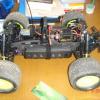It's project time!
-
Recently Browsing 0 members
- No registered users viewing this page.
-
Latest Posts
-
- 6 replies
- 82 views
-
- 481 replies
- 30,185 views
-
- 2,188 replies
- 108,873 views
-
- 23,037 replies
- 977,535 views
-
- 10 replies
- 316 views
-







Recommended Posts
Join the conversation
You can post now and register later. If you have an account, sign in now to post with your account.